Women’s soccer is playing for keeps on and off the field—a dispatch from the Women’s World Cup.
If we hadn’t stopped at the Tim Horton’s for coffee we might’ve outrun the storm, but everyone knows you can’t road trip in Canada without a double-double. Nikki’s knuckles are white on the wheel and we’ve fallen silent in the cab, all eyes peering past the frantic wipers for a glimpse of the road.
“I can’t wait to see Sinclair!” Laura whispers, unable to dampen her enthusiasm. She’s been beaming since we picked her up that morning, a number 12 shaved into her undercut. The captain of the Canadian women’s national soccer team, Christine Sinclair, wears that number, so Laura does, too. That our country was hosting the event was thrilling; from the moment the venues for the 2015 Women’s World Cup were announced, we began planning this trip. My friends had packed their jerseys; they were there to cheer Sinclair. I was, too, but I was also working on a theory.
It’s easy to find pundits who say that women’s soccer is a waste of time—so easy, in fact, that no small part of my professional life is spent arguing just the opposite. But soccer (football, to the rest of the world) is the most popular sport on the planet, and a great many of its fans are women and girls who want to see themselves in the game. I had a hunch that the health of the sport was wildly underestimated.
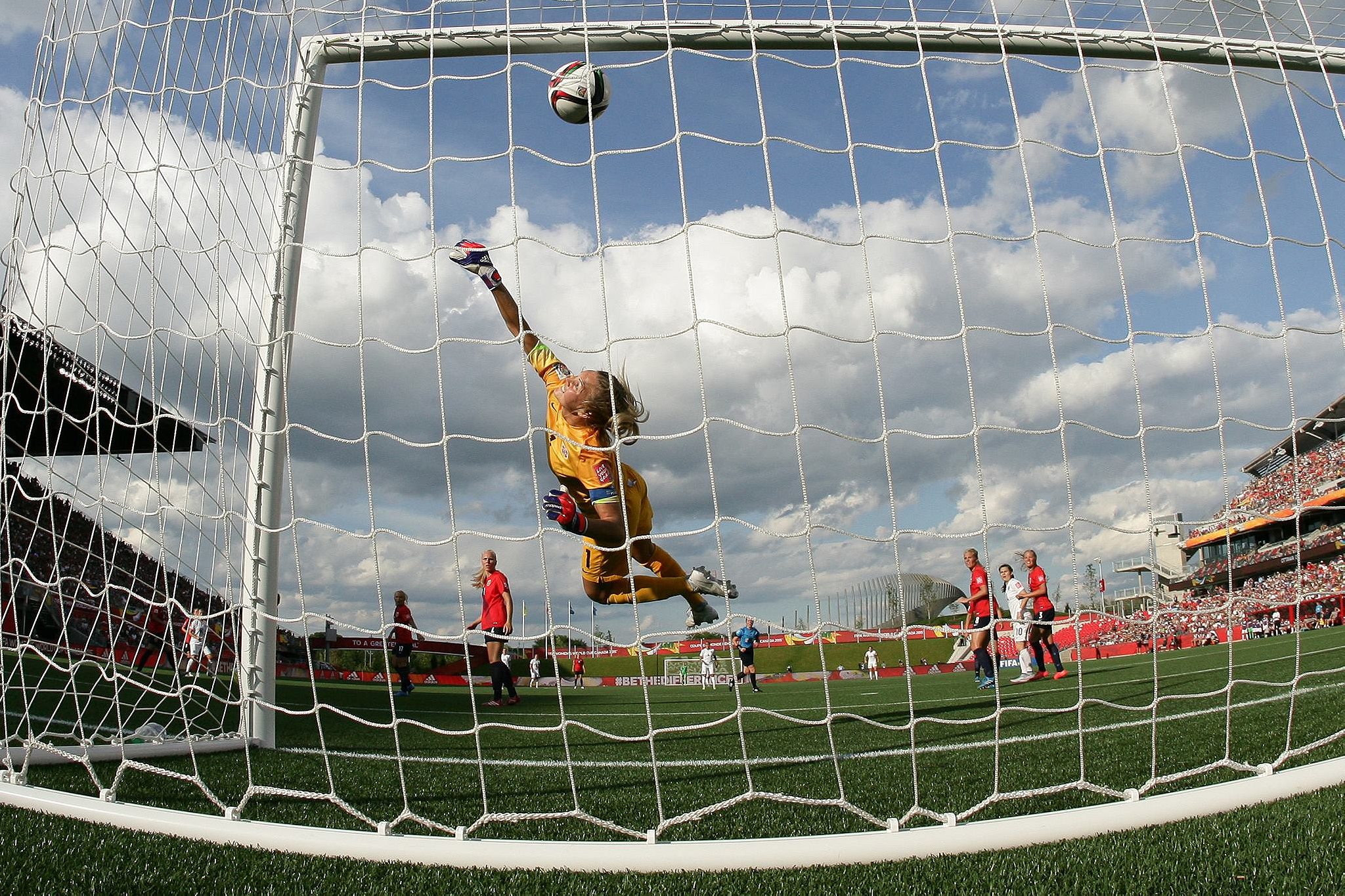
Turf War
In the fall of 2014, a group of female professional players filed a gender discrimination complaint against the Fédération Internationale de Football Association (FIFA), the governing body of the sport, and the Canadian Soccer Association (CSA). The group, headed by infamous American striker Abby Wambach, claimed that the use of synthetic grass—turf—fields amounted to gender-based discrimination. The surface, the complaint said, was inferior to grass and had never been used for the men’s tournament.
Media picked up on the so-called “turf war,” and the Cup enjoyed extraordinary exposure for a few months, but once the players were forced to drop their suit due to stalling and intimidation, it was back to business as usual.
FIFA has a dismal track record when it comes to the women’s game
“Our legal action has ended,” Wambach said in a statement released in January of this year. “But I am hopeful that the players’ willingness to contest the unequal playing fields—and the tremendous public support we received during the effort—marks the start of even greater activism to ensure fair treatment when it comes to women’s sports.”
The truth is, FIFA has a dismal track record when it comes to the women’s game, despite the fact that the organization itself says upwards of 38 million girls and women are involved in the sport. Over the past two decades, four-term FIFA president Sepp Blatter has made himself a symbol of the sexism in the game with routine zingers like suggesting female players wear tighter shorts, failing to recognize a female FIFA Player of the Year (twice), and welcoming a newly-appointed female executive member (the board’s third) by urging, “Say something, ladies. You are always speaking at home, now you can speak here.” By the time of the turf dispute, FIFA’s gender problem was clear to anyone who was paying attention.

And while a culture of gender-based discrimination clearly came straight from the top, FIFA’s sexism cannot be blamed solely on Blatter control problems. FIFA existed before Sepp Blatter, and due to recent events, it will exist after him. In May of 2015, just weeks before the Cup opener in Edmonton and days before the elections at the 65th FIFA Congress, seven FIFA officials were arrested on charges of corruption and racketeering. Blatter was not among those taken into custody, so he ran for—and won—the presidency. “I am the president of everybody,” he declared in his bizarre acceptance speech. Blatter resigned on June 2, three days later.
The Activists
The “greater activism” Wambach hoped to inspire has, in fact, been in progress for years, though none of it is fostered or sanctioned by FIFA. Indeed, the Association is only just beginning to bring women into the highest executive levels, and then only grudgingly. “Football is very macho,” Blatter said at a press conference in 2014. “It’s difficult to accept women in governance.” FIFA’s resistance to female leadership internally is staunch, and it absolutely crushes dissent.
The Guerreiras Project, which runs workshops for Brazilian youth, was founded in 2010 by a group of ex-professional players who met on the on-again/off-again women’s division of the Santos Football Club in Brazil. American soccer player Caitlin Fisher became involved with the team after the Women’s United Soccer Association (WUSA), the first women’s league in the world to pay all its players as professionals, folded. “I had just finished college. I was 22,” Fisher recalls. “I felt like I had so much more soccer in me.”
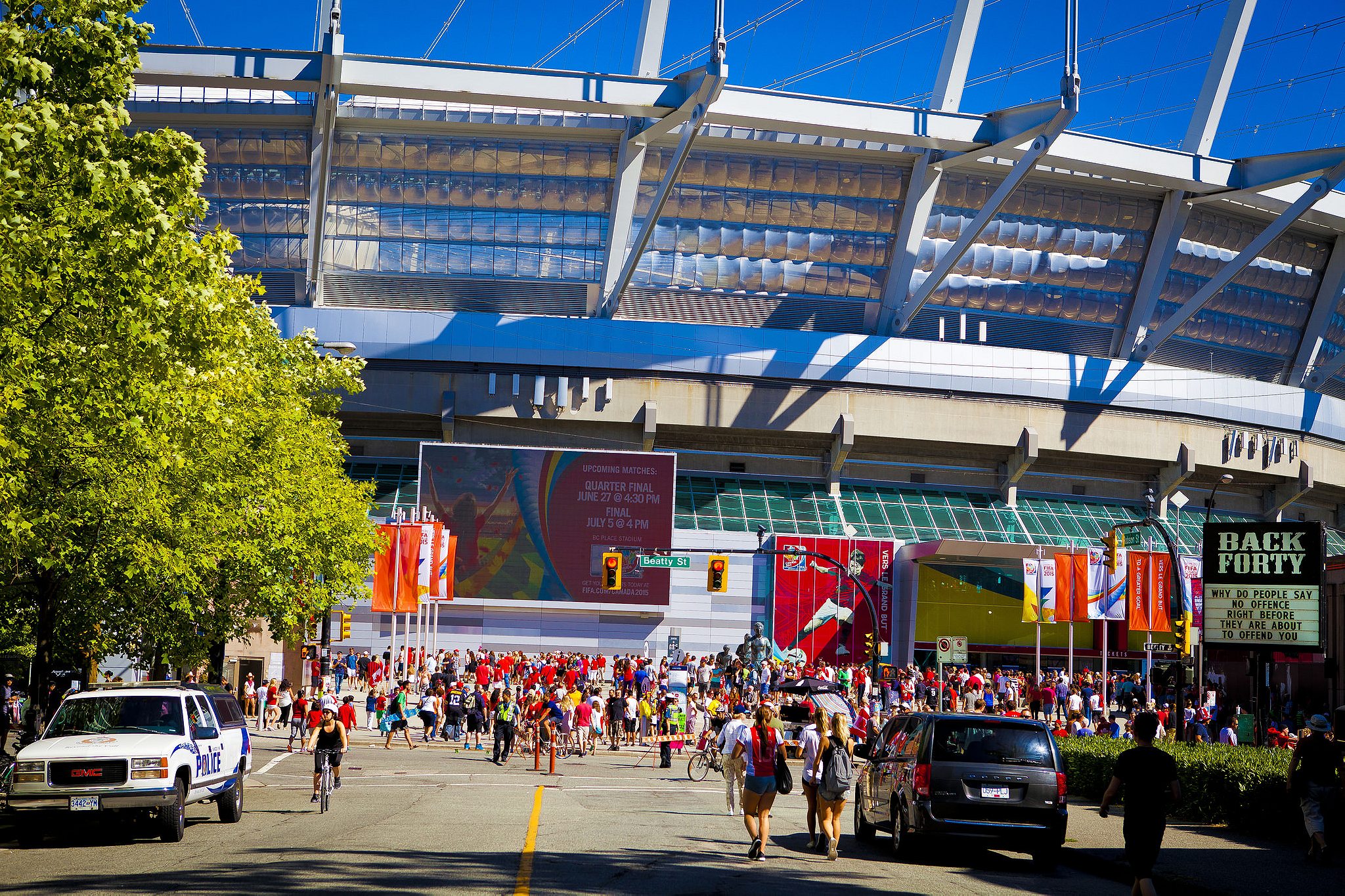
Fisher’s story—of uncertainty, displacement, and an interrupted career—is still relevant more than 10 years on. The current American women’s professional league, the National Women’s Soccer League (NWSL), is the country’s third attempt at a viable model for the women’s game. Every North American female player’s career will be affected by its success or failure. Organizational instability, a lack of funding and resource allocation for the women’s game, as well as a wide gender pay gap even at elite levels, all make the sport an untenable career choice for women, even in America.
These issues—along with other cultural influences such as stereotypes that female players are unfeminine—became the focus for The Guerreiras Project. By introducing children to authentic professional female futbolistas, the group seeks to change minds about women’s place in the game. Realizing that they held within their organization crucial soccer history, the guerreiras (female warriors) prepared an exhibit on women’s soccer for the 2011 Women’s World Cup in Germany. In 2014, at the men’s World Cup in Brazil, they expanded the project with the help of German advocacy group Discover Football, and looked forward to harnessing that momentum for the 2015 tournament in Canada.
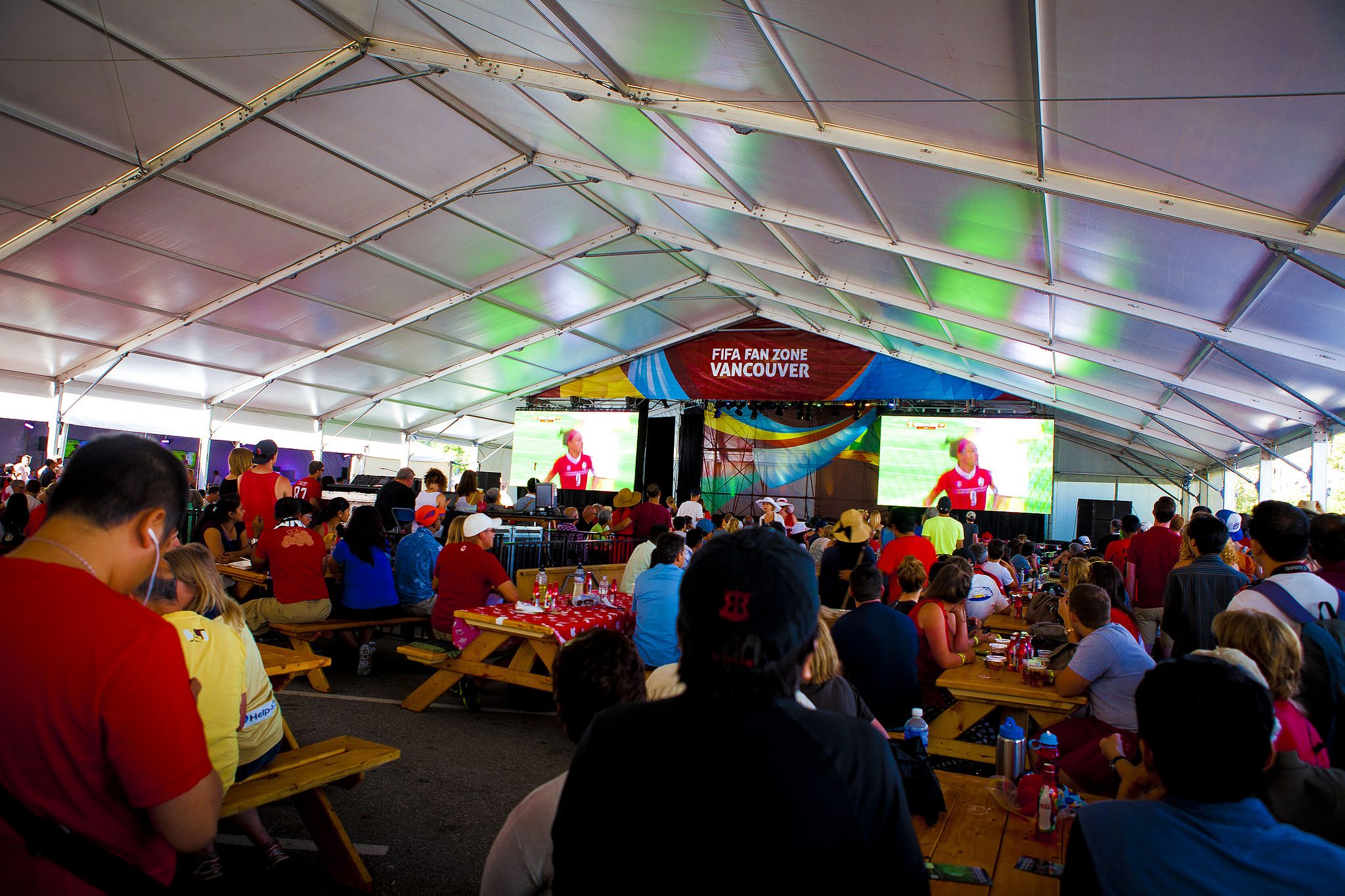
“It was a critical opportunity for activism around gender equality,” Fisher says of the turf dispute. “Putting the women’s world championship on a synthetic surface as opposed to real grass symbolically devalues the women’s game and discriminates against the women who play it. The surface may appear a superficial issue, but the debates around it have momentarily revealed the deeper roots of discrimination below.”
Without meaningful external support or funding, there were limits to what the group, now also working with activists from Mexico and Canada, could accomplish. In Germany, the well-established Discover Football continued to plan for their annual week-long football and culture festival in Berlin, bringing in women’s teams from around the world to participate, celebrate, and strategize.
Sports writer Olga Trujillo knocked on doors for the better part of a year in her hometown, Mexico City. After a series of rejections, she was finally able to put together a an event featuring ex-national team captain Mónica González, FIFA-recognized goalkeeper trainer Tere Campos, several researchers, and journalists from the Mexican newspaper Reforma and ESPN in attendance. “It was the first time something like that was organized in our city,” she says. “It was the first time something with the name Ganando Tereno (gaining ground) sounded not like a complaint, but a warning: We are here and we are a lot.”
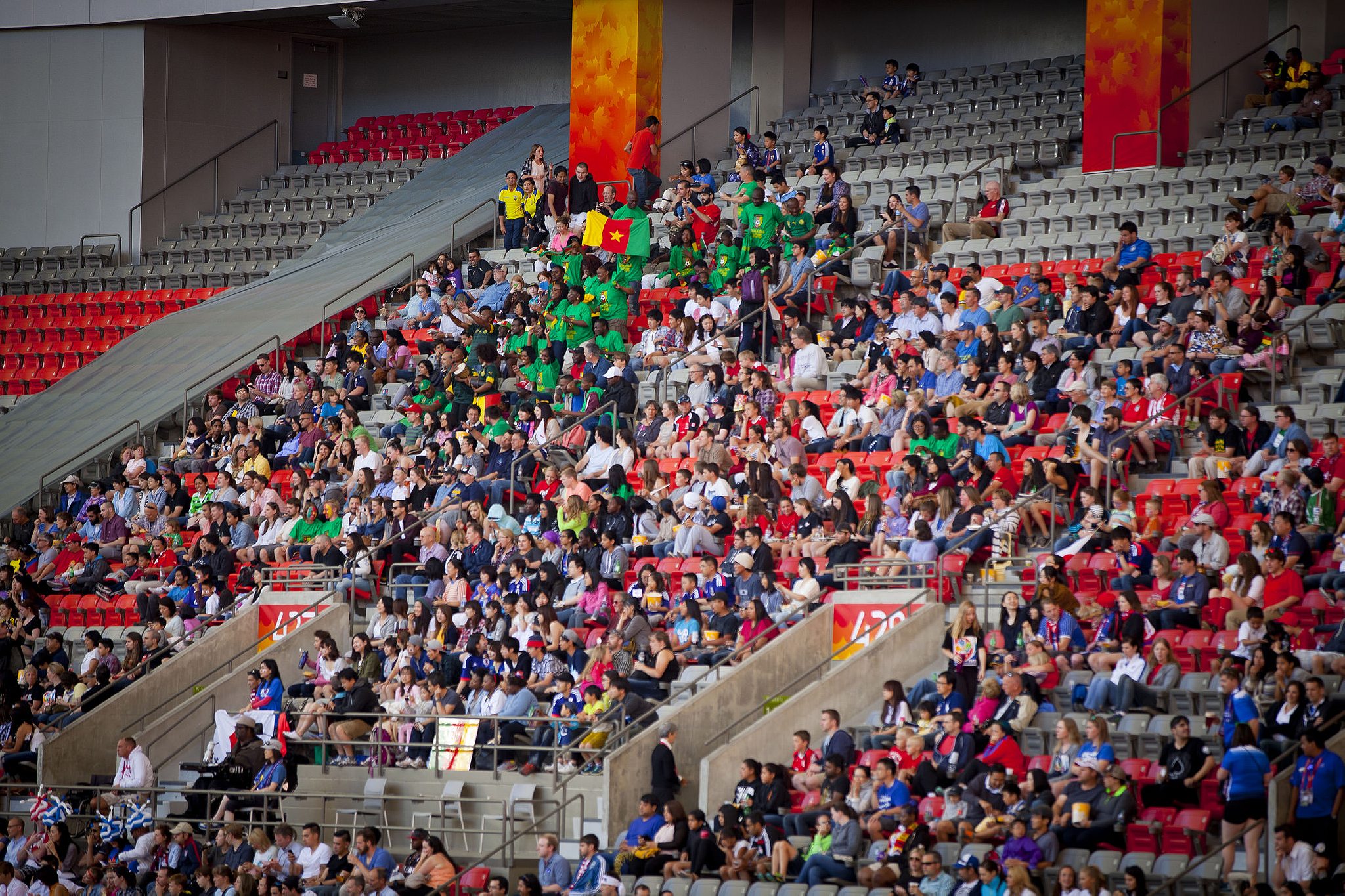
The Numbers Game
The 2015 Women’s World Cup began on June 6, just days after the FIFA arrests. In Canada, Sinclair and her teammates appeared on bus adverts and billboards, and Canada Post sold commemorative stamps and coins. For the first time ever, Nike announced it would offer female players’ jerseys in men’s styles, and, in a move that infuriated many, Electronic Arts unveiled their new FIFA 16 game, which will feature 12 national women’s teams as player options, a first for the franchise.
With the turf dispute officially over and the corruption scandal at least temporarily suspending the FIFA media machine, the game flourished—and ticket sales did, too. The opening match in Edmonton between Canada and China drew a record 53,058 spectators, the most any Canadian national team has ever drawn at a home match, and average game attendance hovered around 25,000 by the Round of 16. Those unable to attend in person tuned in despite limited broadcast rights. Canada’s victory over New Zealand drew an estimated 2.3 million viewers, and 4.5 million viewers watched on Fox as the United States tied Sweden—a Women’s World Cup record and the most viewers on the channel for any soccer match ever. Even the Women’s World Cup section on the FIFA website and the Association Facebook page saw dramatic traffic spikes (up 77 percent and 64 percent, respectively).
I was aware of all this by the time we hit the road for Montreal, but I knew numbers tell only part of the story—a part I felt the critics of the women’s game focus on unfairly. I needed to attend a match.
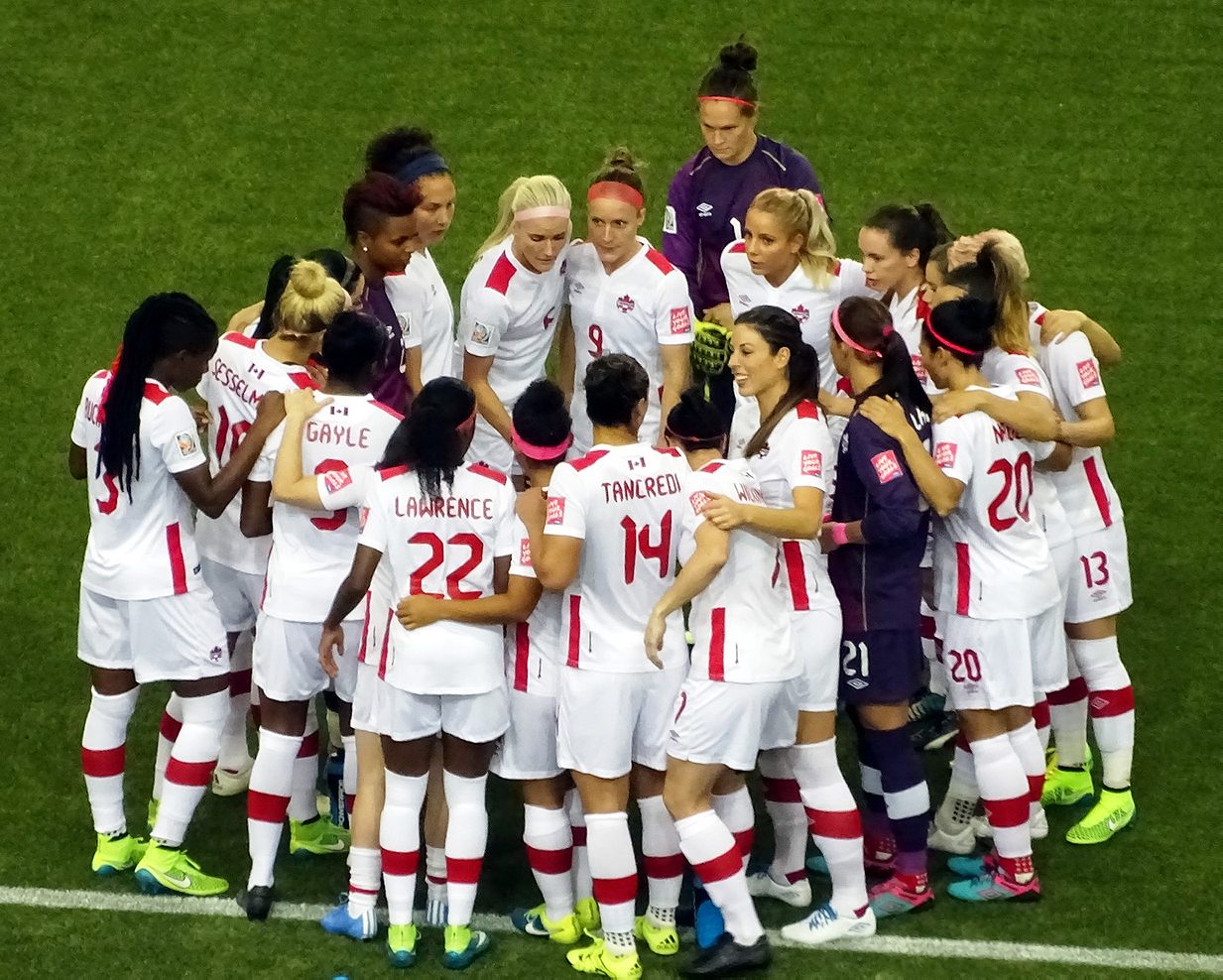
Game Day
On June 15, a few hours before Canada took on the Netherlands, supporters gathered in a dingy split-level pub a few blocks away from Montreal’s Olympic Stadium. The crowd—mostly men, and mostly drunk—were a riot of red and white, costumed in Sinclair jerseys and antler hats and waving the maple-leaf flag. As the day wore on, hungry celebrants paired their pints with cartons of poutine ordered off the food truck strategically parked at the side door.
Canada Soccer has a supporters’ club—the Voyageurs—and, judging by the spontaneous battle song outbreaks, there was a hefty V presence at Bar 99. A woman approached our table and asked if we knew about the new supporters’ club for women. We enthusiastically invited her to sit down. She passed out cards for the club; it’s called the Beaver Brigade. “We’re not looking to compete with The Voyageurs,” she said hastily. “We want to stand alongside them. But we want a place for female fans, too.”
“How is it different?” I asked.
“Some of these guys, they don’t realize how things sound. Like the song about taking your shirts off to support the Red, you know?”
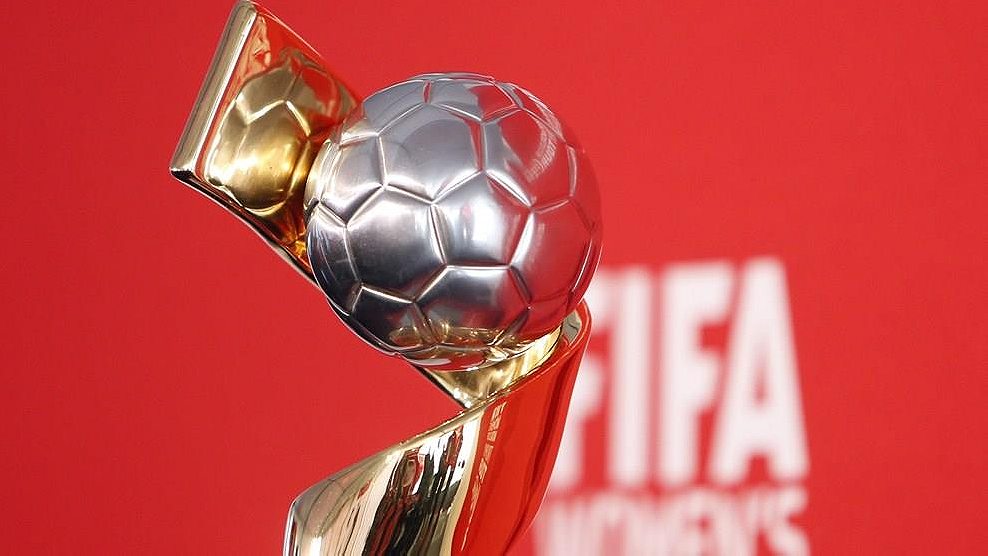
Downstairs, someone started banging on a drum. A clutch of men huddled and began to jump. “All we need is a team of Kaylyn Kyles!” they crowed, eyes wolfish at the thought of the blonde midfielder. “A team of Kaylyn Kyles! A team of Kaylyn Kyles…”
A rumor went around that the bar was running out of beer, but it didn’t matter. It was time for the supporters’ parade to the stadium.
Built in the early ‘70s for the 1976 Olympic Games, Montreal’s Olympic Stadium can hold more than 55,000 people. Local organizers were clearly not expecting to be at capacity for this match; they have only two entrances open and the lines curl around the back end of the facility.
With megaphones, drums, and banners waving, the supporters marched along the streets to the facility. Passersby and drivers cheered and honked in support. At the stadium entrance, the group was swallowed up, a current in the mighty river of 45,420 spectators.
Afterwards, reporters were snide about the match. Canada’s draw against the Netherlands didn’t bode well for the team, they said, and the world found out at the quarterfinals that they were right. But on that night, as I looked around at the mosaic of red and white in Montreal’s stadium, and especially when I closed my eyes and let the roar wash over me, I reveled in being part of this tribe. There are still battles to fight, but we are here, and there certainly are a lot of us.